Other
Fernbank: Naming Chemical Compounds
Learn how to name chemical compounds. Scientist world over use a standard method for naming chemical compounds based on an international standard that makes working with chemicals not only precise but safe as well. Includes quiz.
Chiral Publishing
Chiral Publishing: An Introduction to Chemistry: Molar Mass and Chemical Compounds: Audio Book
Listen and watch as this audio book shows the relations of molar mass and chemical compounds. Discover the formula for molecular mass, ionic compounds, and formula units, and view several pictures about chemical formulas.
CK-12 Foundation
Ck 12: Physical Science: Chemistry of Compounds
[Free Registration/Login may be required to access all resource tools.] Explores chemical compounds and how elements form different compounds.
Texas Education Agency
Texas Gateway: Ionic Bonds: Electron Dot Formulas
Given descriptions, diagrams, scenarios, or chemical symbols, students will model ionic bonds using electron dot formulas.
Georgia Department of Education
Ga Virtual Learning: Physical Science: Bonding and Chemical Reactions
Through informational text, interactive puzzles, and review questions, students differentiate ionic and covalent bonds and identify the properties of each. They also use oxidation numbers to predict formulas of ionic compounds, name...
CK-12 Foundation
Ck 12: Physical Science: Chemical Formula
[Free Registration/Login may be required to access all resource tools.] How to write chemical formulae and what they represent about the substance.
Chiral Publishing
Chiral Publishing: An Introduction to Chemistry: Chemical Nomenclature
Read and learn about the process in which compounds are named and written. View several examples of written compounds and have access to links that give more information about writing names and formulas for compounds.
McMaster University
Mc Master University: Chemistry: Ionic Bonds
This site gives a brief description of bonding in ionic compounds.
CK-12 Foundation
Ck 12: Ionic Compounds
[Free Registration/Login may be required to access all resource tools.] In the following online tutorial students will name ionic compounds containing main group or transition metals, covalent compounds, acids, and bases, using...
CK-12 Foundation
Ck 12: Molecular Compounds
[Free Registration/Login may be required to access all resource tools.] In the following online tutorial students will name ionic compounds containing main group or transition metals, covalent compounds, acids, and bases, using...
Sophia Learning
Sophia: Ionic Compounds: Formulas From Binary Compound Names: Lesson 5
This lesson will demonstrate how to write a chemical formula for a binary ionic compound when given the systemic name. It is 5 of 5 in the series titled "Ionic Compounds: Formulas from Binary Compound Names."
Sophia Learning
Sophia: Ionic Compounds: Binary Compound Names With Transition Metals: Lesson 4
This lesson will demonstrate how to write a chemical formula for a binary ionic compound that includes a transition metal. It is 4 of 4 in the series titled "Ionic Compounds: Formulas from Binary Compound Names with Transition Metals."
ClassFlow
Class Flow: Ionic Bonding & Ionic Compounds
[Free Registration/Login Required] Ionic Bonding & Ionic Compounds - Objective - compare and contrast chemical formulas for ionic & molecular compounds.
Chiral Publishing
Chiral Publishing: An Introduction to Chemistry: An Introduction to Chemical Reactions [Pdf] [Pdf]
A detailed introduction to chemical reactions, organized into two sections: "Chemical Reactions and Chemical Equations" and "Solubility of Ionic Compounds and Precipitation Reactions." Complete with examples, charts, and equations, this...
Chiral Publishing
Chiral Publishing: An Introduction to Chemistry: Compounds and Chemical Bonds: Audio Book
Did you ever wonder how or why atoms bond together? This interactive tutorial sheds some light on why bonds form and the difference between ionic and covalent bonds.
CK-12 Foundation
Ck 12: Polarity and Intermolecular Forces
[Free Registration/Login may be required to access all resource tools.] The following online tutorial describes how the electronegativity difference between two atoms in a covalent bond results in the formation of a nonpolar covalent,...
Educaplus (Jesús Peñas Cano)
Educaplus: Enlace Ionico [In Spanish]
Expand your knowledge of Chemistry. Observe how ionic compounds are networks of electrically charged atoms.
Chiral Publishing
Chiral Publishing: An Introduction to Chemistry: Oxidation Reduction Reactions: Audio Book
Listen to this audio book on Chapter 6, Oxidation-Reduction Reactions. View chapter maps, binary ionic compounds, memory aids, and examples of different chemical reactions.
Georgia State University
Georgia State University: Hyper Physics: Precipitation Reactions
This site from Georgia State University discusses the precipitation reactions and deals with the lead iodide product. Links are provided to information on double replacement reactions as well as ionic compounds. Not too in-depth, this is...
CK-12 Foundation
Ck 12: General Chemistry
[Free Registration/Login may be required to access all resource tools.] Students will be introduced to some of the basic concepts of chemistry.
Biology Pages
Kimball's Biology Pages: Electronegativity
This site, which is a personal site from Kimball's Biology, provides an overview with multiple examples of electronegativity.



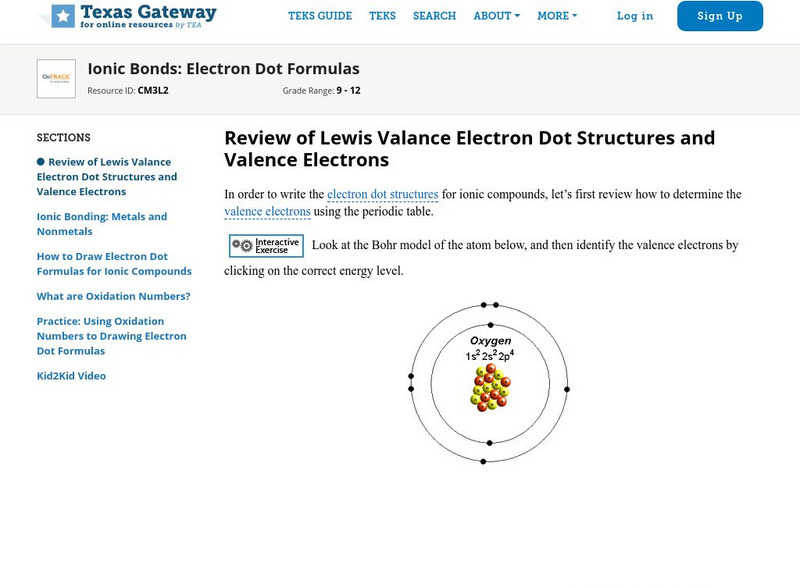

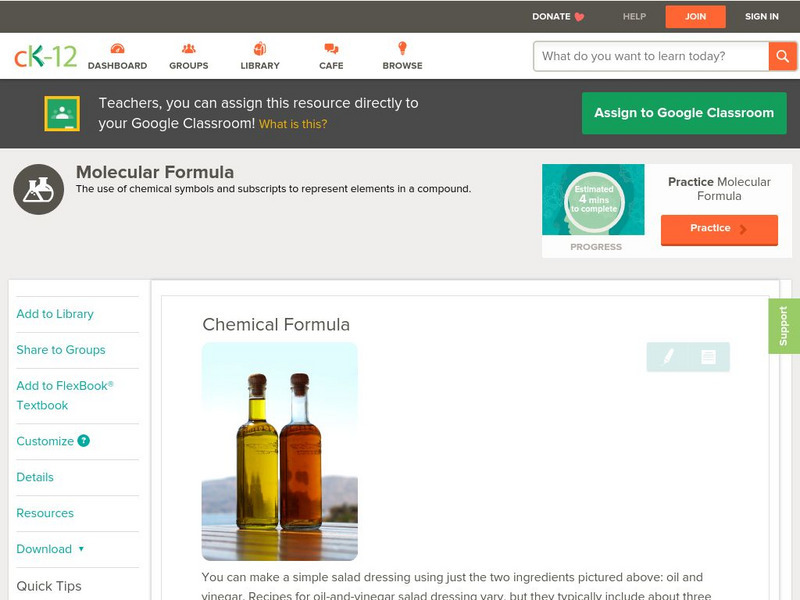
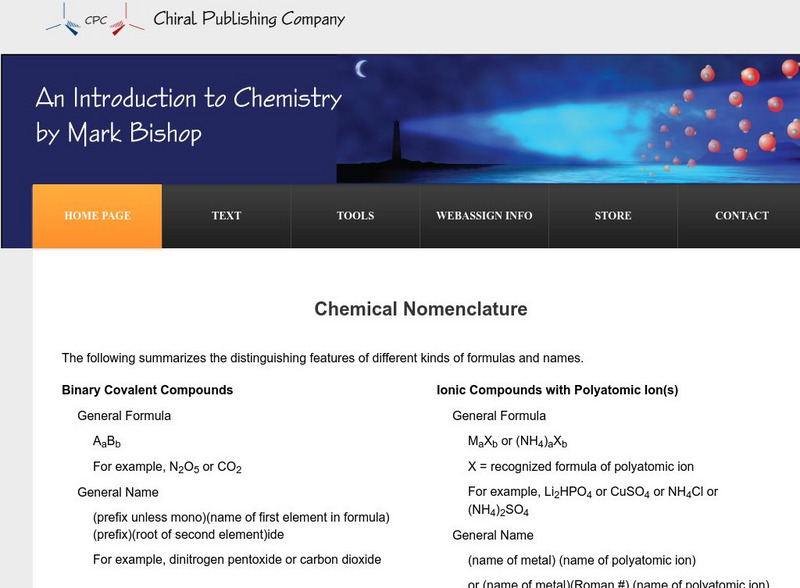


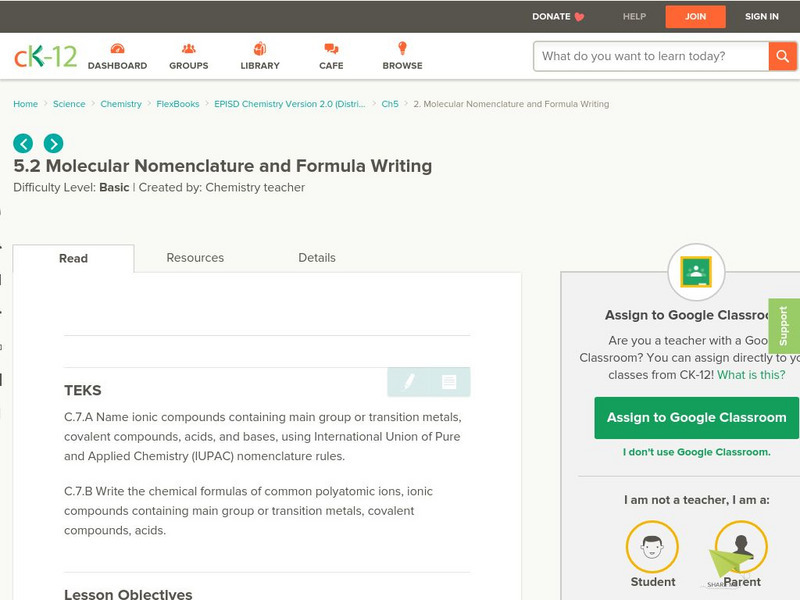
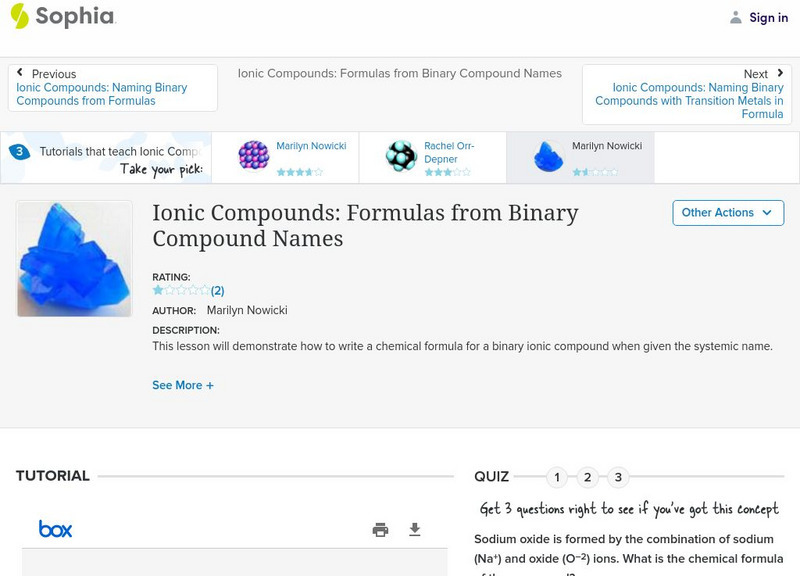


![Chiral Publishing: An Introduction to Chemistry: An Introduction to Chemical Reactions [Pdf] [Pdf] eBook Chiral Publishing: An Introduction to Chemistry: An Introduction to Chemical Reactions [Pdf] [Pdf] eBook](https://d15y2dacu3jp90.cloudfront.net/images/attachment_defaults/resource/large/FPO-knovation.png)
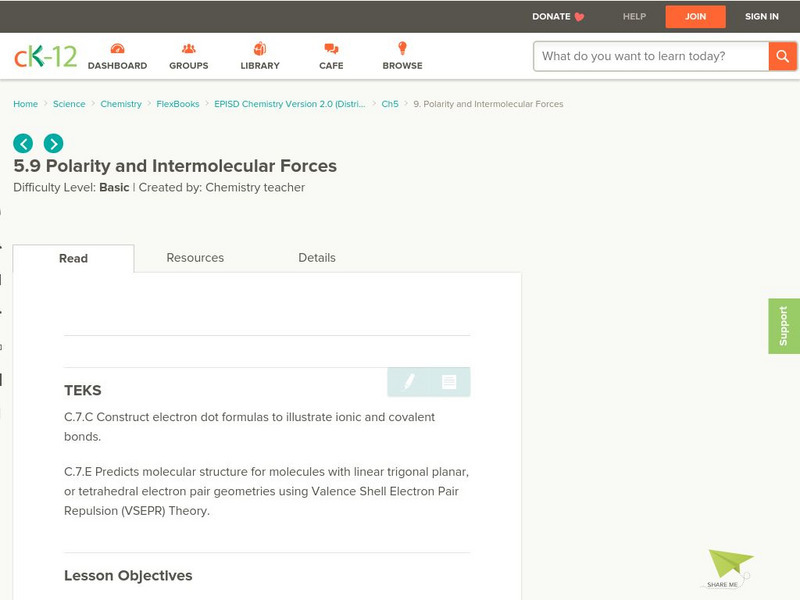
![Educaplus: Enlace Ionico [In Spanish] Activity Educaplus: Enlace Ionico [In Spanish] Activity](https://content.lessonplanet.com/knovation/original/371949-76073a684ee4c0d8b8f98ca59436f253.jpg?1661809839)


